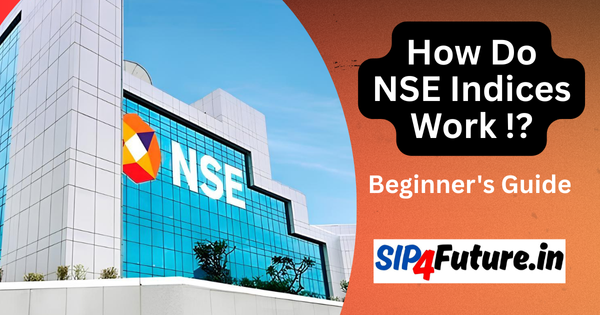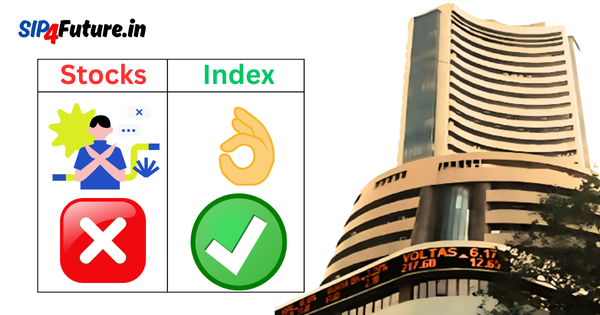One 97 Communications Ltd, the parent company of Paytm, faced a significant hurdle as its subsidiary, First Games Technology, received a Show Cause Notice from the Directorate General of GST Intelligence (DGGI). The notice proposes a staggering GST demand of ₹5,712 crores for the period from January 2018 to March 2023. This development has sent ripples through the financial markets, with Paytm’s stock trading at ₹884.50 on the National Stock Exchange (NSE) as of April 29, 2025, reflecting a modest 0.31% increase. However, the sentiment remains negative due to the potential financial and regulatory implications of this notice. This article delves into the intricacies of the Paytm GST demand, its impact on One 97 Communications, and the broader implications for the fintech and online gaming sectors.
What Is the Paytm GST Demand Notice About?
The GST demand notice issued to First Games Technology centers on the taxation of online gaming activities. The DGGI has proposed a 28% GST levy on the total entry amount collected by First Games for online gaming, as opposed to the current practice of levying 18% GST on platform fees. This shift in tax calculation could significantly increase the tax liability for gaming companies, including Paytm’s subsidiary.
According to Paytm, the notice is part of an industry-wide issue affecting multiple online gaming companies. The matter is currently under review by the Supreme Court of India, indicating its complexity and potential for setting a precedent. Paytm has clarified that First Games contributes less than 1% to One 97 Communications’ consolidated profit or loss, suggesting that the direct financial impact on the parent company may be limited. However, the sheer size of the ₹5,712 crore demand raises concerns about regulatory scrutiny and investor confidence.
| Key Details of the GST Demand Notice | Information |
|---|---|
| Subsidiary Affected | First Games Technology |
| GST Demand Amount | ₹5,712 Crores |
| Period Covered | January 2018 – March 2023 |
| Proposed GST Rate | 28% on total entry amount |
| Current GST Rate | 18% on platform fees |
| Impact on OCL’s Finances | Less than 1% of consolidated profit/loss |
How Will Paytm Respond to the GST Demand?
Paytm has announced its intention to challenge the GST demand notice by filing a writ petition. The company argues that the issue is not unique to First Games, as similar notices have been issued to other gaming companies. This collective challenge, coupled with the ongoing Supreme Court case, suggests that Paytm is banking on a favorable judicial outcome to mitigate the financial burden.
The company’s proactive stance is critical, as prolonged regulatory battles can erode investor trust and divert management focus from core operations. Paytm’s clarification that the notice does not directly impact One 97 Communications’ operations is a strategic move to reassure stakeholders. However, the negative sentiment surrounding the notice could still weigh on the stock’s performance in the short term.
When Did Regulatory Challenges Last Impact Paytm’s Stock?
Paytm is no stranger to regulatory hurdles. In early 2024, the Reserve Bank of India (RBI) imposed restrictions on Paytm Payments Bank Limited (PPBL), barring it from accepting deposits or top-ups in customer accounts, wallets, and other instruments. This led to a significant 55% drop in One 97 Communications’ share price between January 25 and February 16, 2024, wiping out ₹765 crore in operating revenue and ₹648 crore in EBITDA.
More recently, on February 27, 2025, the Enforcement Directorate (ED) issued a show cause notice alleging violations of the Foreign Exchange Management Act (FEMA) related to investments in Singapore, further denting investor confidence. These recurring regulatory issues highlight the volatile environment in which Paytm operates, with the latest GST demand adding to the company’s challenges.
How Does the GST Demand Affect the Fintech Sector?
The Paytm GST demand notice has broader implications for the fintech and online gaming sectors. The proposed 28% GST on the total entry amount could reshape the economics of online gaming platforms, which rely on high transaction volumes and low margins. If implemented, this tax structure could increase operating costs, potentially leading to higher fees for users or reduced profitability for companies.
The fintech sector, already navigating a complex regulatory landscape, may face increased scrutiny as the government seeks to maximize tax revenue from digital platforms. The Goods and Services Tax (GST) Council has been actively reviewing taxation policies for online gaming, betting, and lotteries, with decisions that could impact companies like Paytm, Dream11, and MPL. A shift to a higher GST rate could also discourage innovation and investment in the sector, as startups grapple with rising compliance costs.
| Sector Impact Analysis | Potential Consequences |
|---|---|
| Online Gaming | Higher user fees, reduced margins, slower growth |
| Fintech | Increased regulatory scrutiny, higher compliance costs |
| Investor Sentiment | Caution towards fintech and gaming stocks |
| Innovation | Potential slowdown in new platform development |
What Role Do Government Decisions Play in Paytm’s Stock Performance?
Government policies and regulatory decisions have a profound impact on Paytm’s stock performance. The Union Cabinet’s approval of a ₹1,500 crore incentive scheme for low-value UPI transactions in March 2025, for instance, led to a 6% drop in Paytm’s stock price, as the incentive was half of the previous year’s amount. This reduction in UPI incentives directly affects Paytm’s revenue, given its significant reliance on UPI transactions.
Additionally, discussions around reintroducing the Merchant Discount Rate (MDR) on UPI transactions for large merchants could benefit Paytm by boosting revenue. A March 2025 report indicated that the government is considering a tiered pricing model, with merchants having an annual turnover exceeding ₹40 lakh potentially facing MDR charges based on GST filings. Such a policy could enhance Paytm’s profitability, but its implementation remains uncertain.
Global market dynamics also influence Paytm’s stock. Rising interest rates, geopolitical tensions, and inflation fears have contributed to a broader market slump in 2025, impacting fintech stocks like Paytm, Zomato, and Swiggy. These external factors, combined with domestic regulatory challenges, create a challenging environment for One 97 Communications.
How Has Paytm’s Stock Performed Historically?
Paytm’s stock has experienced significant volatility since its IPO in 2021. The stock debuted at 44 times sales, reflecting high investor expectations, but regulatory setbacks and market corrections have led to sharp declines. In 2024, Paytm’s stock surged 153% before a 30% dip in early 2025, driven by regulatory scrutiny and a broader market downturn.
As of April 29, 2025, Paytm’s stock price stands at ₹884.50 on the NSE, with a market capitalization of approximately ₹56,242.03 crore. The stock’s 52-week high was ₹1,062.95 on December 17, 2024, while its 52-week low was not specified in recent data. Despite a year-to-date loss of nearly 18% in 2025, mutual funds have increased their stake in Paytm from 11.20% to 13.11% in Q4 FY25, signaling confidence in its long-term potential.
| Historical Stock Performance | Details |
|---|---|
| Current Price (29.04.2025) | ₹884.50 |
| 52-Week High | ₹1,062.95 (17.12.2024) |
| Year-to-Date Loss (2025) | ~18% |
| Market Capitalization | ₹56,242.03 Crore |
| Mutual Fund Stake (Q4 FY25) | 13.11% |
What Is the Global Market Scenario Impacting Paytm?
The global market environment in 2025 is marked by volatility, with rising interest rates, geopolitical tensions, and renewed inflation fears affecting investor sentiment. Fintech stocks, including Paytm, have been hit hard, as investors adopt a cautious approach amid a global market slump. The Sensex and Nifty have experienced significant swings, influenced by U.S. trade policies and global economic uncertainties.
For Paytm, these global headwinds exacerbate domestic challenges. The company’s exploration of global markets, as noted by Motilal Oswal, is limited by capital constraints, but its strong cash position of ₹12,850 crore in Q3 FY25 provides some resilience. However, the negative sentiment surrounding the GST demand notice could further dampen investor confidence, particularly in a risk-averse global market.
How Are Analysts Viewing Paytm’s Future?
Analyst perspectives on Paytm’s stock vary, reflecting the balance between its growth potential and regulatory risks. JM Financial maintains a “Buy” rating but lowered its target price to ₹1,010 in April 2025, citing reduced UPI incentives and potential regulatory triggers like MDR reinstatement or the removal of the Paytm Payments Bank embargo. Motilal Oswal has a “Neutral” rating with a target price of ₹870, emphasizing cost optimization and financial services growth. Jefferies and Geojit BNP Paribas have “Hold” ratings with target prices of ₹850 and ₹845, respectively.
| Analyst Target Prices (April 2025) | Brokerage | Rating | Target Price |
|---|---|---|---|
| JM Financial | Buy | ₹1,010 | |
| Motilal Oswal | Neutral | ₹870 | |
| Jefferies | Hold | ₹850 | |
| Geojit BNP Paribas | Hold | ₹845 |
Looking ahead, Paytm’s CEO, Vijay Shekhar Sharma, expressed optimism about achieving profitability in Q4 FY25, driven by core business growth and investments in new areas like display-enabled payment soundboxes. However, the outcome of the GST demand case and other regulatory developments will be critical in shaping the company’s trajectory.
What Are the Risks and Opportunities for Investors?
Investing in Paytm involves navigating a mix of risks and opportunities. The primary risks include:
- Regulatory Uncertainty: Ongoing GST, FEMA, and RBI-related issues could lead to financial penalties and operational disruptions.
- Market Volatility: Global and domestic market fluctuations may continue to pressure Paytm’s stock price.
- Profitability Delays: Legal battles and compliance costs could delay Paytm’s path to consistent profitability.
On the opportunity side:
- Growing Digital Payments Market: India’s digital payments sector is expanding, with Paytm well-positioned as a market leader.
- Mutual Fund Confidence: Increased stakes by mutual funds like Motilal Oswal and Nippon indicate long-term optimism.
- Potential Regulatory Wins: Favorable outcomes in the Supreme Court or reinstatement of MDR could boost revenue.
The ₹5,712 crore Paytm GST demand notice underscores the challenges of operating in India’s dynamic fintech and online gaming sectors. While the direct financial impact on One 97 Communications may be limited, the negative sentiment and regulatory scrutiny could weigh on investor confidence. Paytm’s proactive response, coupled with its strong market position and growing institutional support, offers hope for a recovery. However, investors must remain cautious, as regulatory outcomes and global market conditions will shape the company’s future.
Disclaimer: The information provided in this article is for educational purposes only and should not be construed as investment advice. Readers are encouraged to consult with a qualified financial advisor before making any investment decisions. Stock market investments are subject to market risks, and past performance is not indicative of future results.




